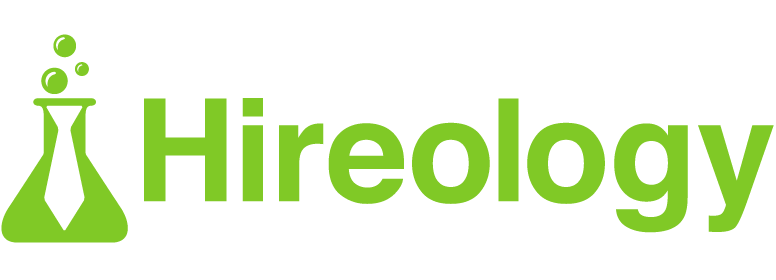The American people are going back to work — but it’s still not enough to offset the stresses that businesses have felt since the beginning of the pandemic. On Friday, the Bureau of Labor Statistics reported 428,000 jobs added to the economy in April; the unemployment rate remained unchanged from last month at 3.6%, continuing the lowest unemployment rate since the beginning of the pandemic.
At the same time, the workforce participation rate dropped two-tenths of a point to 62.2% and the labor force shrunk by a reported 363,000 workers, the largest dip we’ve seen since September 2020. Hireology customers, on the other hand, were able to mitigate the same obstacles as other businesses and find the right people for their teams. Our customers created a cumulative 24,773 new jobs, increased the amount of applications received to 382,184, and made 11,906 total hires.
Similar to throughout the pandemic, leisure and hospitality led job creation in April again, with a total gain of 78,000. Manufacturing drove the next largest amount of gains with 55,000, followed by the transportation and warehousing industry with 52,000, and professional and business services with 41,000.
While these results are promising at face value, there is a larger undercurrent in this economy: an imbalance between the current labor demand and available supply. Consumer demand for goods and services is skyrocketing as life returns to normal, leading to a significantly increased demand for workers. At the same time, there just aren’t enough people in the workforce to meet the demand. In fact, there are 1.9 vacant jobs available for each unemployed worker according to the latest data, with no relief in sight.
One contributing factor to this imbalance is the rise of gig work options. With the rising popularity of nontraditional employment, people now have the flexibility and compensation they’ve desired for so long without being tied to rigid schedules and traditional work settings. Job seekers can work when it is convenient for them and their busy lives — whether that’s a few hours a day or a longer, remote shift. When the world was collectively put on pause in 2020, the freshly unemployed masses had to create ways to sustain their lifestyles while remaining safe amidst the uncertainty. What these freelancers found was that they could continue to live the way they wanted, even after the world started returning to “normal,” which led to the Great Resignation.
The good news is that people want to work. The bad news? Your company needs to work harder when it comes to catching their eye. While we still stress the importance of a great candidate experience during the hiring process, your applicants won’t experience it until they’ve been convinced to submit an application. In addition to streamlining your hiring processes, it appears that the theme for the first month of the second quarter will be paying closer attention to applicant sourcing and job descriptions. After all, you can’t make a hire if they never apply.
There are many ways that businesses can get the maximum return on their recruiting efforts — but your company needs ways to stand apart from the pool of other employers. Below, we provide insight on what your business can do to attract top talent.
Emphasize employment branding
Employment branding goes beyond your logo — it includes every interaction your profiles have on social media, the reviews customers leave for your business, your career site, and so much more. While, yes, it is important to have consistent branding across all of your platforms, if you’re not leveraging the exposure these sites have with the critical need to drive applications, you’re losing out on top talent.
Since there’s no way to differentiate what ultimately influences candidates from one opportunity to the other, your company’s best bet to attract talent is to cover all of your bases with a multipronged approach. Be sure to use your social media profiles and other platforms to emphasize time and time again all of the benefits and perks that come along with employment at your business. Candidates have a real need to see what’s in it for them; by being upfront and listing all of the great ways they’ll be taken care of with your company, you’ll likely drive more applicants.
Secondly, if you have any long-standing employees or ones who really enjoy their career with you, see if they’ll contribute an employee testimonial that you can post. Potential applicants want to know what it’s really like working for a business, and are doing their due diligence when it comes to researching companies. Testimonials are a great way to showcase your workplace culture, available career pathways, or are just another way to drive home some of those perks you talked about.
Flexibility is required
If you want to appeal to a larger crowd of applicants, you need to incorporate some sort of flexibility when it comes to scheduling. There’s no way to get around this aspect, which has come to be expected by job seekers across the nation.
Traditional workplaces are a thing of the past — but many businesses still need employees to work in person, whether they’re at a front desk at a hotel or changing brakes on a vehicle. While it may seem that companies that rely on in-person talent have their hands tied when trying to work flexibility into their policies, there are other ways to offer applicants the leeway they’re looking for.
For example, a company could allow employees to pick their schedule. This policy is different from merely asking for preferred days and shifts; this tactic actually empowers employees to be in control of their time, which is a strong motivator amongst the gig economy. Job seekers have lives outside of the workplace; some are parents who need to find childcare when they’re working, while others have extended families, holidays, and other bids for their time. The benefit of this strategy is that some employees will prefer the same schedule every week, while others are bound to be more flexible in their availability so all of your shifts will be covered.
Another way to encourage flexibility in the organization is to motivate employees to take Mental Health Days once a month. A Mental Health Day is one PTO day that the employee picks during the month that they spend doing an activity of their choice to destress. Finding time during the busy work week to attend to one’s mental state can be nearly impossible to do, thanks again to the many stressors of everyday life. By integrating a day for your employees to do what they need to do to stay at the top of their performance — and subsequently marketing it in open positions — you demonstrate to potential employees the value that you place on having a healthy relationship with work, another motivator behind the gig economy.
Employee referrals are a recruiter’s best friend
Your best employees are connected to hundreds of peers, former colleagues, former classmates, and more who trust their opinion. Why not incentivize them to share your open roles with their existing networks? Plus, applicants tend to trust their friends’ opinions about an employer over the company itself.
The best way to get real results from your program is by putting a little more time and energy into it. To ensure that your referral program runs at peak performance, you need to regularly communicate your open roles as well as participation guidelines at every opportunity you get, set the right bonus amounts relative to the positions, and make sure you’re actually paying people those bonuses when you say you will.
Adjust course when necessary
As with life in general, the only constant in this economy is change. It’s important to be aware of how your recruiting and hiring efforts perform over time and adjust accordingly. There’s plenty of data you can track to determine the success of your strategy. For example, you could hone in on what sourcing channels provide the best ROI by tracking applicants and hires from each campaign or channel and adjusting your spend and resource allocation accordingly.
There’s no one-size-fits-all solution when it comes to the current hiring obstacles; the best anyone can do is make the next right step forward with what they know and learn from what doesn’t work. There are so many ways to improve hiring, however, that more than one can be implemented at once; with careful monitoring, it’s possible to create the ideal toolkit for each business based on combining strategies that have proven to be effective for them.
Takeaways
The economy is recovering fast, which is certainly good news. However, the newest challenge we’ve seen over the past year is that there just aren’t enough available workers to meet employers’ skyrocketing demand for labor. People want to work — you just have to convince them that your company is better than the competitor down the street. That means marketing your open roles like products in addition to streamlining your processes to improve the candidate experience. By making policy changes that incorporate flexibility into your employees’ lives, reprioritizing employment branding to leverage exposure, recruiting from untapped existing talent networks, and carefully monitoring the effectiveness of various campaigns, your business will be fully staffed before you know it.
To see how Hireology’s people-first platform can help your business address your unique pain points during the entire employee life cycle, schedule a demo today.




